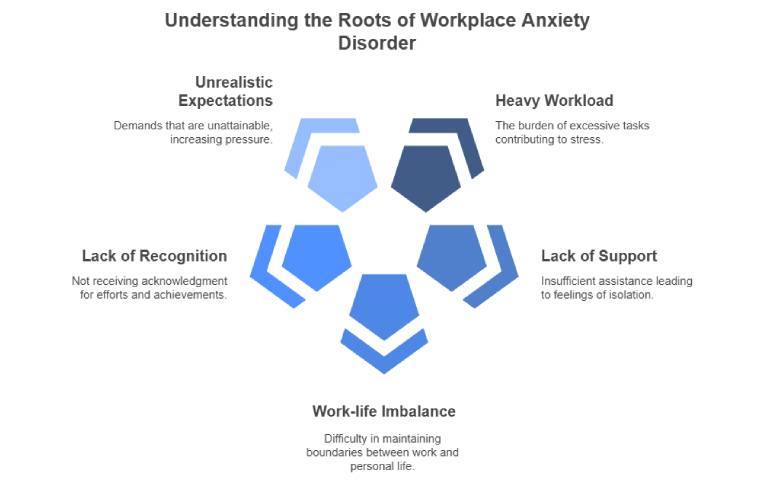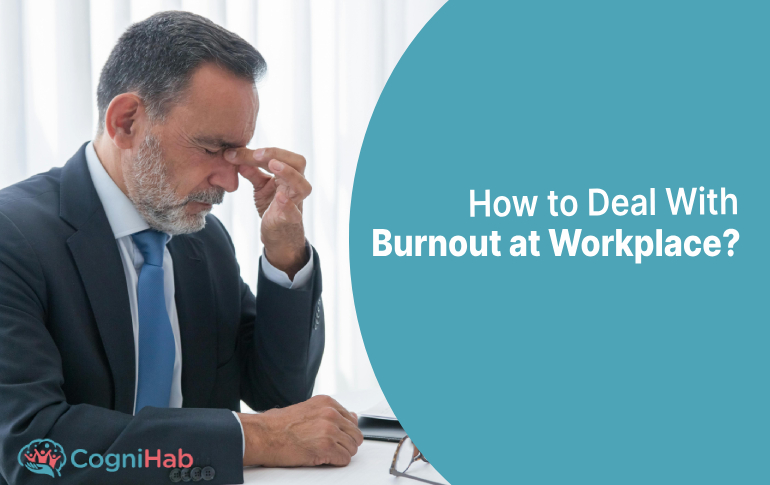20 Effective Strategies on How to Deal With Burnout at Workplace
As the pace of industry evolution worldwide is quite rapid, hustle culture has been normalized recently. The constant pressure placed upon employees to be available has driven the challenge of workplace anxiety disorder. Dealing with burnout at work is now a primary concern for almost every business around the world.
How to deal with burnout at work has become a question all businesses face. This guide offers employers worldwide 20 effective solutions that they are adopting to build a stress-free work environment.
The Occurrence of Workplace Anxiety Disorder

There are several causes for workplace anxiety disorder, and the triggers can be different for everyone. However, there are some common causes. The earlier detection of the stressors can help employers acknowledge the issue at a primary stage. Following are some of the common causes of burnout at workplaces:
- Heavy Workload
- Lack of Proper Support
- Work-life Imbalance
- Lack of Recognition
- Unrealistic Expectations
The Symptoms of Burnout at Work
Identification of stressors is the foremost step to managing burnout at workplaces. The employees themselves do not understand that they are experiencing workplace anxiety disorder. Some of the common signs of burnout at a workplace:
- Lack of enthusiasm for work
- Drop in concentration
- Lowered job satisfaction and achievements
- Frequent headaches, stomach problems, or muscle tension
- Irritability or frustration
- Constant irritability and detachment from your work or colleagues
- Decreased productivity or performance
20 Ways to Stop Burnout at Work?
Workplace burnout can be prevented by fostering a supportive culture, balancing workloads, and promoting well-being. Encouraging breaks, flexibility, and more can help reduce stress. Below are the top 20 strategies to combat burnout at work.
1. Cultivate A Trustworthy Culture
It is believed to be the primary responsibility of the employer to create a culture of genuine trust. Showing employees respect and care through words and deeds and checking on them regularly lowers stress among employees, and employers learn about their needs.
2. Divide the Workload
Outsourcing parts of the responsibilities whenever necessary can help leaders divide the workload without causing employee burnout. The initiative helps keep employees and contractors happy and enthusiastic and avoids burnout.
3. Figure Out Priorities
Prioritizing business processes and directing the employees accordingly can help businesses deal with employee burnout. Identifying processes, customers or accounts driving the maximum value for the businesses plays a crucial part in prioritizing tasks and avoiding workplace anxiety disorder.
4. Encourage Work-Life Balance
Setting boundaries by acknowledging employee limits and taking time some time off during work hours, can prevent exhaustion related to work. In times of high workload, employers must promote work-life balance and remind employees to take time to recharge. This has been one of the effective techniques for dealing with work burnout.
5. Streamline Processes
6. Hold Check-Ins and One-On-One Meetings
Employers need to establish a culture of support and well-being. One of the major practices is to have a culture of daily one-on-one employee meetings and listen to their workload challenges and career goals.
7. Implement Technological Solutions and Guidance
Providing proper support to the employees is an employer's responsibility and helps in better management of projects and tasks. This includes guidance from the organization and potential technological solutions to focus on what's most important.
8. Encourage Open Communication
Encouraging open communication in the workplace tells businesses how to deal with employee burnout. Additionally, it sets realistic expectations and offers flexibility to maintain a work-life balance.
9. Lead by Example
Leading with an example of the leaders themselves can help set a target for the employees. Seniors or managers must take care of their mental well-being first in order to avoid setting the wrong example and creating pressure on others.
10. Encourage Well-Being Internally
Businesses should encourage employees to take small, mindful breaks to recharge themselves in times of chaos. It can help boost productivity and nurture the well-being of employees at workplaces.
11. Make Exercise a Priority
Exercising can enhance positive mood and overall mental well-being. Organizations should offer subscriptions for gym facilities and fitness apps.
12 Encourage Regular Breaks
Breaks or a period off from work can help employees get recharged and avoid burnout at the workplace. Employers should allow or provide small breaks for vacations or personal time to deal with workplace anxiety.
13. Encourage Inclusivity
Bullying and discrimination in the workplace lead to workplace anxiety disorder and can lead to a rise in employee turnover. Promoting inclusivity across organizations can help employees feel included and important.
14. Host A Surprise Activity
Employers are responsible for maintaining a happy environment in the workplace. Surprising employees now and then with fun activities and rewards acknowledging their hard work can help companies deal with workplace burnout.
15. Allow a Work-From-Home Option
Being in a comfortable surrounding of own space can help enhance productivity. Businesses should encourage working from home whenever possible in order to get the maximum work outcome from employees. This also helps in lowering stress levels and helps deal with employee burnout.
16. Have A Backup Plan
Providing backup options for all the processes in the workplace plays a vital part in helping employees get a break from their responsibilities. Putting heavy responsibilities and roles on one employee causes work-life imbalance and workplace burnout.
17. Understand Your Team's Distinct Needs
Stressors can be different for each individual and must be addressed effectively. Seniors and managers must understand the needs of each team member and provide solutions to meet these requirements to avoid workplace anxiety disorder.
18. Implement Health & Wellness Programs
Implementing health & wellness programs at workplaces can help avoid workplace anxiety disorders. This includes providing proper support, one-on-one sessions with employees, and conducting group activities in order to boost morale.
19. Provide Incentives
Acknowledging employee's hard work and rewarding them time-to-time for their achievements in jobs can help employees feel valued and cared for. Providing an extra dose of motivation can help companies deal with employee burnout.
20. Take Advantage of Technology
Taking advantage of technology to deal with anxiety at work can help businesses on how to deal with burnout in the workplace. VR solutions for calming anxious employees during work hours have proven to be an effective initiative in the last few years.
How Does VR Solution Help to Deal with Stress?
Research has shown that Virtual Reality solutions substantially lower anxiety and stress by offering immersive, calming environments that stimulate relaxation responses in the brain. Virtual reality meditation enables employees to calm themselves down.
Cognihab's Mindful Journeys is a VR-based stress relief platform integrating soothing music, motivational voiceovers, and serene virtual environments to provide a calming, multi-sensory experience. Personalized options and interactive mindfulness exercises enable employees to personalize their journey, increasing focus and lowering anxiety.
Bottom Line
The occurrence of workplace anxiety disorder in the last few years has become a serious issue across all industry sectors. How to stop burnout at work has become a question all businesses face. Businesses and employees suffer severely from these issues, but the situation is far from hopeless.







